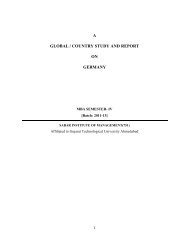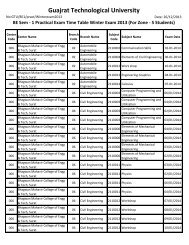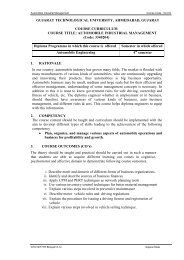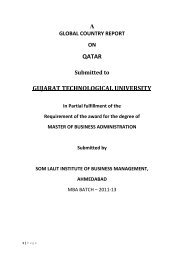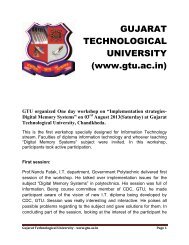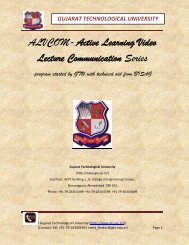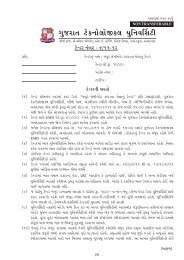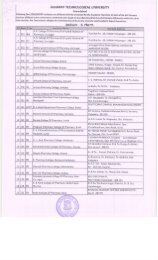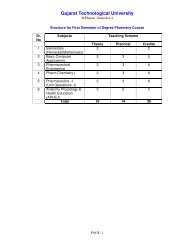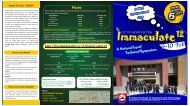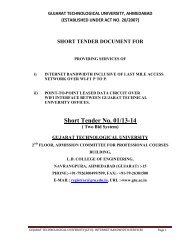708-Chaudhari Technical Institute, Gandhinagar - Gujarat ...
708-Chaudhari Technical Institute, Gandhinagar - Gujarat ...
708-Chaudhari Technical Institute, Gandhinagar - Gujarat ...
You also want an ePaper? Increase the reach of your titles
YUMPU automatically turns print PDFs into web optimized ePapers that Google loves.
Japan Economy overview<br />
In the years following World War II, government-industry cooperation, a strong<br />
work ethic, mastery of high technology, and a comparatively small defense<br />
allocation (1% of GDP) helped Japan develop a technologically advanced<br />
economy. Two notable characteristics of the post-war economy were the<br />
close interlocking structures of manufacturers, suppliers, and distributors,<br />
known as keiretsu, and the guarantee of lifetime employment for a substantial<br />
portion of the urban labor force. Both features are now eroding under the dual<br />
pressures of global competition and domestic demographic change. Japan's<br />
industrial sector is heavily dependent on imported raw materials and fuels. A<br />
small agricultural sector is very much subsidized and protected, with crop<br />
yields among the highest in the world. Usually self sufficient in rice, Japan<br />
imports about 60% of its food on a caloric basis. Japan maintains one of the<br />
world's largest fishing fleets and accounts for almost 15% of the global catch.<br />
For three decades, overall actual economic development had been<br />
spectacular - a 10% average in the 1960s, a 5% average in the 1970s, and a<br />
4% average in the 1980s. Growth slowed markedly in the 1990s, averaging<br />
just 1.7%, largely because of the after effects of inefficient investment and an<br />
asset price bubble in the late 1980s that required a protracted period of time<br />
for firms to reduce excess debt, capital, and labor. Measured on purchasing<br />
power parity (PPP) basis that adjusts for price differences, Japan in 2011<br />
stood as the third-largest economy in the world after China, which surpassed<br />
Japan in 2001. A sharp downturn in business investment and global demand<br />
for Japan's exports in late 2008 pushed Japan further into recession.<br />
Government stimulus spending helped the economy recover in late 2009 and<br />
2010, but the economy contracted again in 2011 as the massive 9.0<br />
magnitude earthquake in March disrupted manufacturing. Electricity supplies<br />
remain tight because Japan has temporarily shut down most of its nuclear<br />
power plants after the Fukushima Daiichi nuclear reactors were crippled by<br />
the earthquake and resulting tsunami. Estimates of the direct costs of the<br />
damage - rebuilding homes, factories, and infrastructure - range from $235<br />
billion to $310 billion, and GDP declined almost 1% in 2011. Prime Minister<br />
Yoshihiko NODA has proposed opening the agricultural and services sectors<br />
23



